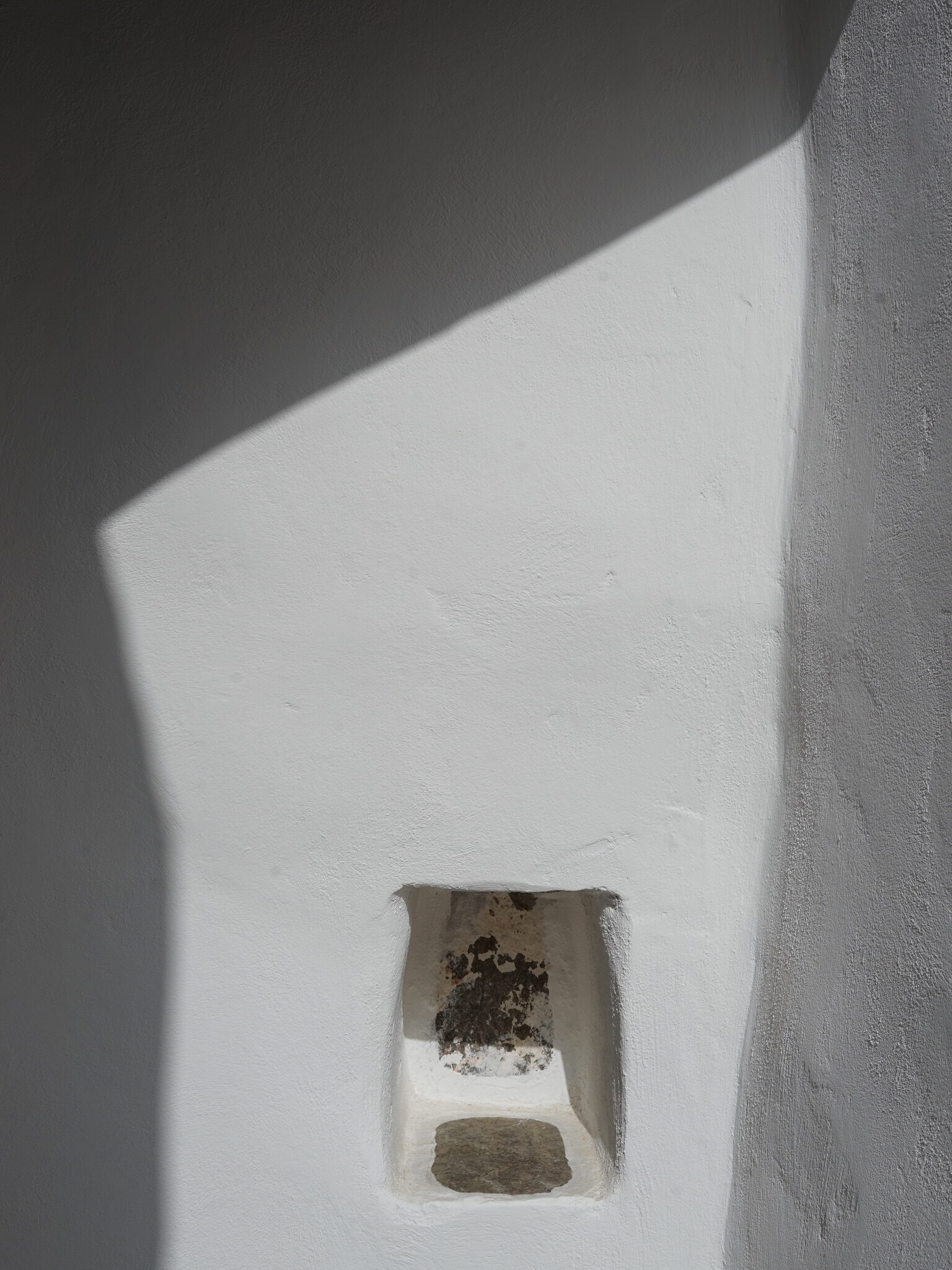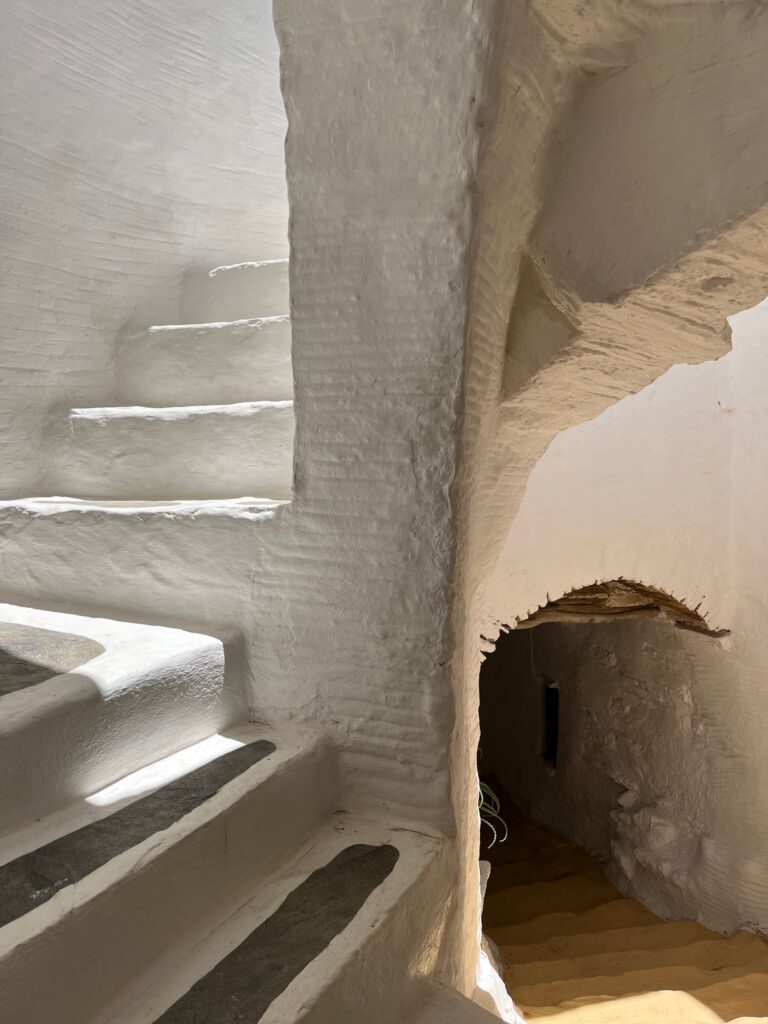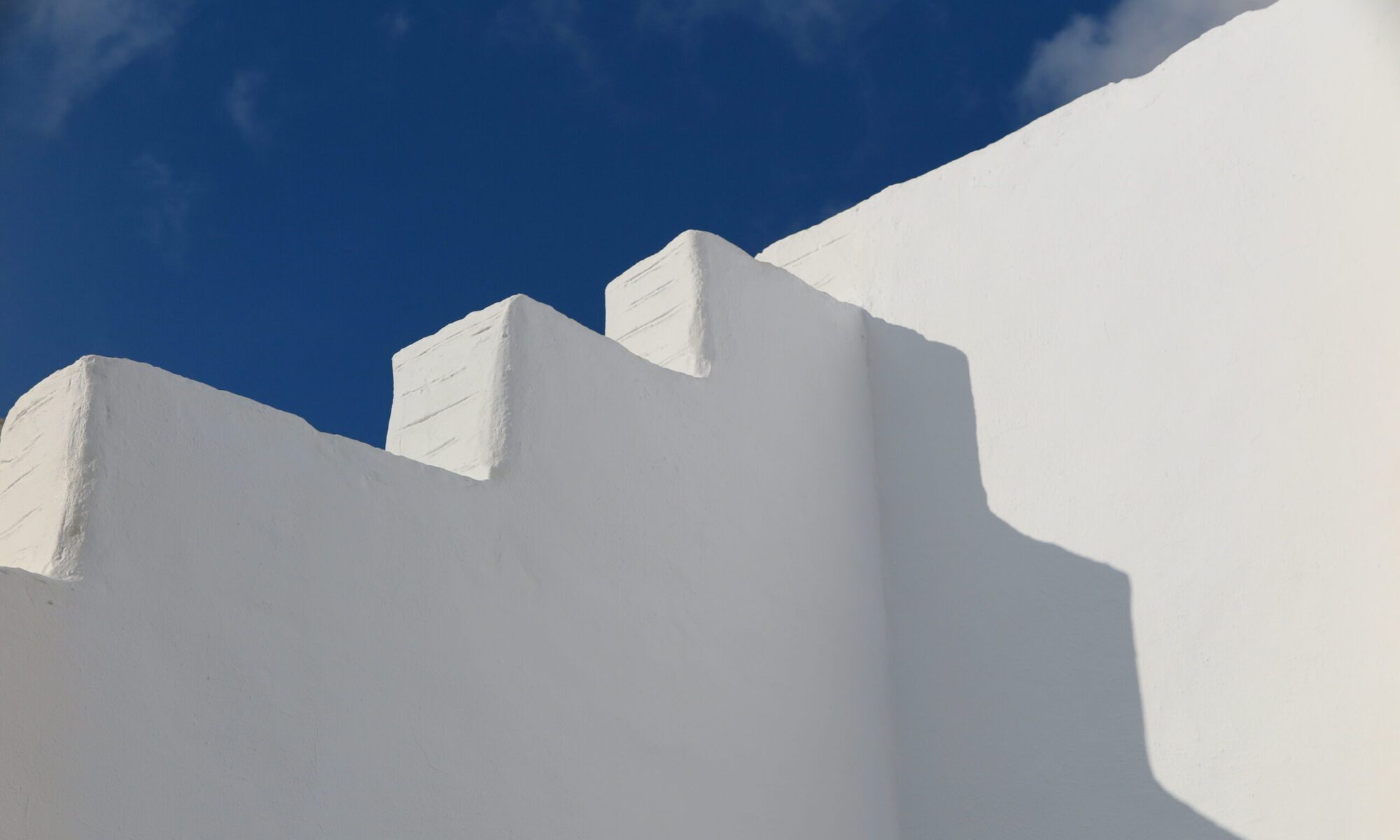Nested in the heart of Triantaros
Considering the former function of every detail, there is a lot of room for speculation and even fantasy. It is this functionalist love for simplicity and usability paired with century-long and fantastic history which inspired our reconstruction and design of the Artist House. The baseline thrive is the combination of its tradition rooted in highly selected quality and robust materials made by solid craftsmanship. The Artists House philosophy therefore attributes functionalistic items with significant value. It includes to celebrate and intensify the experience of everyday rituals such as brewing coffee, sensing materials, torching candles or spatial showering. It is a philosophy to counteract the acceleration of modern life and to feel the present. It raises awareness on the fundamental needs and is enshrined in the balanced and nourishing environment of the beautiful island Tinos.
THE HOUSE AND THE VILLAGE
In the last twenty years, those former stables were renovated, the donkeys were gone and the houses grew bigger. Still, the architecture of village houses is shaped from the former use.Triantaros itself is a very old village and can be tracked back to the Middle Ages (around 1000 AD). And the Artists House is based in its ancient part. Like an amphitheatre it is build on the hills side providing an impressive panorama of the Aegean Sea. When vagabonding around the labyrinthine streets of Triantaros you may touch the uneven facades and trace the eternal white-bordered stone slabs. Again functionalistic, the ancient stone houses provide shade and protection from the characteristic Cycladic wind and the intense summer sun.

Until the 1960s Triantaros has been holding no more than 300 residents surrounded by terraced and formerly agricultured fields still observable throughout the landscapes. They provide a glimpse to Tinos’ passed fame for grain production – defining its nickname to be Athens’ „grain chamber“ for many years. Starting in Triantaros two tiny creeks fertilize green valleys while in the wider area wind- and watermills spanned their wheels. As time passed they got abandoned or converted into new homes for tourists or inhabitants of Triantaros.
Rediscovering Journeys
Since form follows function, many objects offer a timeless design.

The GREY ENERGY
Grey energy is the energy hidden in a product (or building), which is required to extract that product from nature or to cultivate, manufacture, package, and transport it.
We have reconstructed the Artist House with the philosophy of preserving the ancient soul of the house, combined with modern amenities. The walls and ceilings are 95% reconstructed from the original ruin. Materials such as floors, if not from the former ruin, are from this island. We have tried not to integrate any additional materials. So, a large part of the materials has already survived for many centuries.
As with the resources reconstructing the house, every product has a carbon footprint, so we try to continue to reduce our impact by providing high-quality objects, which have long-lasting quality and durability.
We aim to find materials that suit the Mediterranean climate, especially on Tinos, where the high humidity requires special materials to ensure they last as long as possible, avoiding problems like mold and rust.

Our SLOW TRAVEL
Tourism, for us, is a cultural exchange with the aim of conveying culture and providing our guests with the opportunity to connect with the place they are visiting in various ways. We are not Disneyland, nor a photographic backdrop, but a vibrant place of culture. For us, slow travel means creating incentives for guests to spend extended periods on Tinos and at the Artist House, truly immersing themselves in Greek life. Through cuisine, architecture, design, and changing exhibitions, we aim to offer new perspectives and create a space for meaningful engagement.
Our slow travel approach encourages visitors to take their time and experience the island at a leisurely pace. This philosophy aligns with the principles of slow travel, which emphasize a deeper connection with the local culture, environment, and community. By staying longer, guests can fully appreciate the nuances of Tinos, from its culinary delights and traditional architecture to its artistic heritage and natural beauty. This approach enriches the travel experience while supporting sustainable tourism by fostering a greater appreciation for the destination and its preservation.

THE PHILOSOPHY OF THE COMMUNITY
We learn from our ancestors, who built sophisticated and efficient houses in a time when the island still lacked electricity and modern amenities.
The Cycladic villages were built as a community. Nestled together, they are protecting each other from the strong winds and summer heat. The village locations were carefully chosen, mostly near a water source for the surrounding farmland and in more sheltered areas of the island.
In the villages, alleyways were deliberately built for air circulation, also shaded to cool the air. The windows were small to avoid heating the interiors and because the material was expensive. They were built with the stone of the rocks around the village, from small quarries, as each stone had to be transported to the village without machine power.
In the reconstruction of old houses, one can learn a lot about the efficient and intelligent construction method.
Find our more
We invite guests to rent the house year-round, extending our season to include autumn, winter, and spring, providing a unique opportunity to experience Greek culture during these quieter, yet equally enriching, times of the year.


SEA SAND AND MARBLE
The materials and technics from the last centuries formed the house. Plastered with sea sand, coated with lime formed rounded edges from a thousand touches and millions of brushstrokes.
We’ve reconstructed the Artist House carefully by using traditional techniques to preserve its unique character, maintaining an awareness of its history and to consciously underline the advantages of the old construction methods. The floors are made of Tinian stone slabs while the ceilings are partly insulated with seagrass. The latter is a technique which remains a popular modern construction model. The original walls have been built without cement. Soil has been used to connect the stones. Eventually this ancient construction got adorned with breathing mineral paint. Nestled in the middle of the village, built deep into the islands rocks, the Artists House provides shelter from the wind as well as the intense summer heat.
Telling the Artists House story, it is obvious that the construction materials used are primarily sourced from its former ruins or the island. For instance the giant granite stone used for the kitchen worktop once has been part of an ancient wine press.
THE ART OF STONE WALLING
Stones stacked on top of each other in an art form that has survived for centuries. Not only houses and little churches on the island are built as ξερολιθιά (dry stone walls). When walking through the landscape and peering into the old stables, one sees rounded roofs and columns of stacked stones.
They are artistic and built in the rocks or fields. Built by farmers and not architects, they stand on the island, outlasting wars, earthquakes, and skyscrapers.
